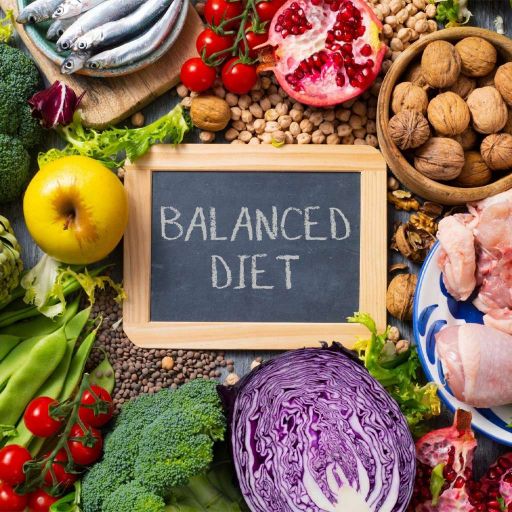Let’s face it: when it comes to weight loss, the term “quick fix” sounds as appealing as a free donut at a gym. But before you indulge in the latest fad diet or miracle pill, let’s steer you toward healthier, more sustainable methods.
Rapid weight loss can seem like a tempting shortcut, but the key is to do it safely and effectively. Buckle up, because we’re diving into the essentials of achieving healthy, rapid weight loss without falling into risky traps.
Aim for a balanced diet.
Weight loss occurs when a diet is balanced. It ensures that one gets all the food components required without adding weight. Here’s how to pay attention to the various components of your diet.
●Protein
Protein helps keep your muscles strong. In addition to other benefits, it makes you feel satiated for an extended period of time, resulting in less eating. Include lean meat such as chicken or turkey, or go for salmon or tuna fish.
Dairy products, including yogurt and cheese, are also beneficial. Other proteins, such as lentils, chickpeas, nuts, and seeds, are of great importance. They help with muscle repair and control hunger.
●Healthy Fats
Healthy fats are also good for general wellness and the hormones in the body. These also aid absorption of vitamins and provide lasting energy.
Activities such as eating avocados, nuts, and seeds contribute to healthy fats. Olive oil is great for cooking and salads. These fats support heart health and keep you satisfied.
●Complex carbohydrates
Complex carbs give you steady energy and keep your blood sugar stable. They break down slowly, avoiding energy spikes and crashes.
Brown rice, quinoa, and oats are some of the whole grains that should be eaten. Vegetables and fruits should be included in plenty. These are food items that contain a lot of vitamins and minerals.
●Fiber
Fiber helps with digestion and keeps you full longer. This helps manage calorie intake. Eat fiber-rich foods like broccoli, carrots, apples, berries, beans, and whole grains. Fiber promotes regular bowel movements and helps prevent constipation.

Calorie deficit
Establishing a negative energy balance is very important for weight reduction. This is when you consume fewer calories than what you spend. In order to determine the number of calories you need in a day, use a calorie calculator.
It will consider your age, gender, weight, height, and activity level. Once you know your maintenance calories—the amount needed to keep your current weight—you can start cutting back.
Try to cut 500-1000 calories a day. This will typically lead to weight loss of around 1 to 2 pounds weekly. This is an acceptable and sustainable rate of weight loss.
Cutting calories too much can lead to muscle loss and other health issues. Balance is important. Make sure you still get enough nutrients while losing fat.
Regular Exercise
Physical activity is also crucial for weight loss. Your calories are used for daily activities while maintaining the muscle mass. A proper exercise program incorporates the following:
●Cardiovascular Exercise: These are exercises such as jogging, cycling, and swimming that cause an increase in heart rate and calorie expenditure. Such exercises also promote the health of the heart.
●Strength Training: Exercises involving weight lifting or body weight lead to muscle. Muscle has a higher metabolic rate compared to fats, even while in a non-active state.
●Flexibility and Balance Exercises: Yoga and Pilates increase flexibility and balance. They also help prevent injuries and improve posture.
Combining these types of exercise will help you achieve and maintain weight loss. They support your fitness goals and overall health.

Mindful eating
Mindful eating means being fully aware of your eating experience. It helps you make healthier choices and prevent overeating.
●Eat Slowly: Chew your food thoroughly. Take your time to enjoy the flavors and textures. Eating slowly helps you feel full with smaller portions.
●Avoid distractions: Don’t eat while watching TV or using your phone. Distractions can lead to mindless eating. Focus on your meal to better notice hunger and fullness.
●Listen to Your Body: Pay attention to your hunger and fullness signals. Eat when you’re hungry and stop when you’re full. This helps prevent overeating and supports balanced eating.
Mindful eating can improve your relationship with food and promote healthier eating habits.
Intermittent Fasting
Intermittent fasting includes alternating periods of eating and not eating. This method allows you to reduce calorie intake and enhance metabolic activity.
One popular method is the 16/8 approach. You fast for 16 hours each day and eat during an 8-hour window. For example, eat from 12 PM to 8 PM and fast from 8 PM to 12 PM the next day. This method makes it easier to manage what and when you eat.
Another method of intermittent fasting is the 5:2-fasting method. You routinely consume the amount of food that you want for five days a week and limit your calories to 500-600 on starvation days. These fasting days should not be back-to-back to keep your energy levels steady.
Intermittent fasting assists in producing a calorie deficit and results in weight loss. It also helps in controlling blood sugar control, metabolism, and cell repair. Make sure to eat nutritious foods during your eating windows to stay healthy.

Some other miscellaneous tips
Track your progress to stay motivated. Use a journal or an app to log your food intake, exercise, and weight changes. Regular monitoring helps you stay on track. It also helps you spot areas that need improvement.
Sleep is key for weight loss. Lack of sleep can mess with hormones that control hunger and appetite. This can lead to eating more. Aim for 7-9 hours of good-quality sleep each night.
Having support is important. Join a weight loss group or find a workout buddy. You can also get advice from a healthcare professional. Support from others provides motivation and accountability.
Conclusion
Achieving rapid weight loss in a healthy way is like juggling flaming torches; it looks impressive, but you need balance and skill.
Set achievable goals, follow a diet that won’t leave you hangry, drink plenty of water, get moving regularly, and don’t forget to hit the hay and manage stress. Master these tricks, and you’ll be shedding pounds with style and sanity intact.

How Modern Technology is Revolutionizing Hearing Aids

How to Prevent Physical and Mental Inactivity in Elders

The Importance of Dental Health: More Than Just a Smile

The causes of pain below the rib cage in the abdomen

How to Adopt a Healthy Lifestyle: 10 Things to Consider

Understanding the Different Types of Life Insurance Policies